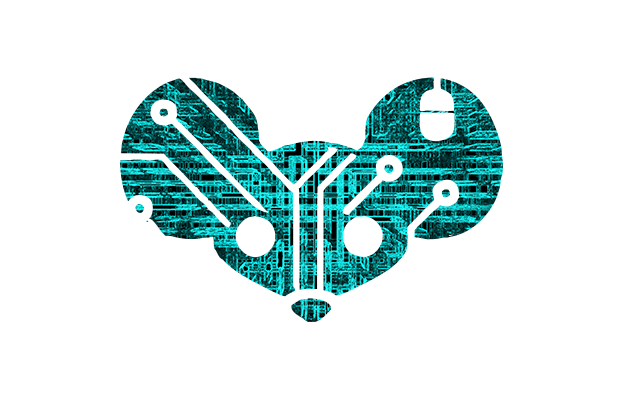I learned better in 2012 when they tried to put an Amazon search bar in their start menu, the same thing people are complaining about with windows today.
If I wanted to use corposhit I would have stayed with windows.
I learned better in 2012 when they tried to put an Amazon search bar in their start menu, the same thing people are complaining about with windows today.
If I wanted to use corposhit I would have stayed with windows.


It only breaks asymmetric encryption like SSL and PGP. The strength of symmetric encryption, like you have with password protected files and drive volumes, is reduced somewhat but should still be more than sufficient.
And like the other commenter said, there are asymmetric algorithms that are quantum-safe, they just aren’t in widespread use (though apparently just this year NIST announced a standard for lattice based cryptography).
In some ways phone cameras are very impressive, since CCDs are now cheap and good enough that they’re no longer the bottleneck. All the computational photography stuff they do boosts their capabilities even more.
The thing that really limits them is the size and optical quality of their lenses.
Someone should post a Chinese cabbage or Jerusalem artichoke as well.
Reminds me a lot of this image:



I feel like we should be trying to engineer fusarium venenatum to express various animal proteins.
It already does a really good job as a meat substitute, and (unlike lab grown meat) the process for culturing it is very well understood and mature.
I don’t know if trying to genetically engineer a fungus would present any special challenges vs a plant or bacteria though.


I’m not trying to be mean when I say this, but to me your comment sounds a little bit like “I know you guys are starving but if you ever solve that issue make sure you don’t go too far in the other direction. I sometimes buy food that I don’t end up using, which is fairly pointless.”
I wish the biggest grievance I had with my country’s politics was that some of the parties are redundant. I think I’d be willing to give up a limb or two for that actually.


That’s a veritasium clickbait video.
While it’s true that no voting system is completely perfect that’s a little bit like saying that no one’s body is completely perfect, so trying to be healthy is pointless. The efficacy of voting systems can in fact be quantified and compared based on baysian regret, and some are better than others.

That’s for single winner elections. Almost any proportional system is going to be better than any single winner system, with the added benefit of eliminating gerrymandering. Presumably the best proportional system available is proportional score voting, but I don’t know if there’s been rigorous mathematical analysis of that yet.
There are tons of patents for things that are completely trivial, incredibly vague, or totally nonsensical.
The really interesting thing about costasiella kuroshimae is that its digestive system branches and goes up into all of those ‘leaves’, which is how the algae makes its way there to have its chloroplasts extracted.


I hope that after the bubble bursts the nuclear reactors can be used to put energy on the grid and maybe they’ll find something worthwhile to do with all those compute GPUs.
Most diagrams don’t include the mesentery, so people just think their intestines are sitting there like a pile of rope inside their torso.


Solar panels aren’t worth it for a normal EV, but supposedly the Aptera is so small, lightweight, and aerodynamic (with that teardrop shape) that they actually add a significant amount of range.


In a lot of situations I would rather cross mid block than at a corner crosswalk. The cars can’t be relied on to stop anyway, and mid-block there are a lot less directions you have to worry about.
Even if the intersection is signalized given the existence of right turns on red it’s still often safer to cross mid block.
Remember back when the progress bar on the nyancat video was a nyancat?
That sounds really interesting. I never thought about it that way before but I guess (dry) snow isn’t very conductive.
Are there any articles about or pictures of this project out there anywhere?

To my knowledge absolutely no one saying “Ban landlords” is also saying “Don’t build any more housing.”
There are plenty of people (EDIT: some of whom are in this very thread) who like to site that there are more vacant houses in the country than there are homeless people, as if to imply we already have all the housing we need.
But the fact of the matter is that US and Canadian cities have increased in population without a proportional increase in housing stock. The difference is mostly made up by more people living with their parents into adulthood, people living with more roommates to make rent, and multiple families living in “single family” houses.
We don’t do anything about it because home owners treat housing as an investment and expect its price to keep going up forever. Also because people hate multi-unit residential buildings for all sorts of nonsensical and racist reasons.
To be clear I am an advocate for the Vienna model of public housing and programs that temporarily repossess and rent out vacant properties, but I am first and foremost an advocate for housing abundance.


Farmers right now are fighting a legal battle for the ability to repair their own tractors.
It’s not good for farm equipment to be locked down and sealed off just like it’s not good for operating systems to be locked down and sealed off.


A little while back I ended up using YouTube for a few minutes without an ad-blocker. Every single video had a transphobic ad.
I didn’t think it was possible for me to hold any more contempt for advertising, but somehow they managed it.
If it were constructive it would be called a discussion, not an argument or debate.